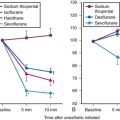
Patient engagement tools are essential. They improve how healthcare providers interact with their patients. These tools can make a big difference in patient care and satisfaction. With many options available, it’s important to know which features are most valuable.
In this article, we’ll highlight 13 innovative features. These are things that you should look for in patient engagement tools. These features can help you choose the best tool. For example, better communication, efficient care, and enhanced patient experiences. Keep on reading for more info on patient communication platforms.
1. User-Friendly Interface
A user-friendly interface in patient engagement tools is crucial. They ensure that both patients and healthcare providers can use the system easily. It means the tool has a clear and simple design. This makes navigation straightforward.
With a user-friendly interface, patients can quickly access their health information. These also involve their scheduled appointments. They can also communicate with their doctors without frustration.
Similarly, healthcare providers can manage patient records. They can interact with their patients more efficiently. This ease of use helps improve the overall experience. It also encourages more active participation from patients in their own care.
2. Appointment Scheduling
This healthcare engagement technology is a game-changer. Patients can book, reschedule, or cancel appointments at their convenience. This feature reduces the workload for administrative staff. It also minimizes no-shows because patients receive reminders. Look for tools that offer real-time availability and automated confirmation emails.
3. Secure Messaging
Secure messaging enables patients and providers to communicate easily and safely. This feature should comply with healthcare regulations like HIPAA to ensure patient privacy. Secure messaging allows for quick questions, follow-ups, or sharing of test results. It does so without the need for a phone call or office visit.
4. Telehealth Capabilities
Telehealth is more important than ever. They allow patients to consult with their healthcare providers from their homes. This is particularly beneficial for those who live in remote areas. They are also perfect for those with mobility issues. Look for HD video quality, screen sharing, and secure data transmission.
5. Personalized Health Education
This helps tailor information to each patient’s needs and preferences. Direct primary care EHR provides content that is specific. This involves the individual’s health conditions, treatment plans, and interests. For example, a tool might offer customized tips on managing diabetes for one patient. It would also have other tips for those with heart disease.
This personalized approach makes the information more relevant and easier to understand. It helps patients make better decisions about their health. It also helps them stay more engaged in their care.
6. Medication Management
These tools help patients keep track of their medications easily. They can send reminders when it’s time to take medicine. They also show what doses are needed, and even provide information about each drug. They can also help patients refill prescriptions on time and avoid missing doses. These tools help ensure patients follow their treatment plans correctly and stay healthy.
7. Health Tracking
These tools allow patients to monitor their health metrics over time. They can track important information. These involve blood pressure, glucose levels, and weight.
Patients can enter their data regularly. They can view trends or changes through easy-to-read charts and graphs. This feature helps them stay informed about their health status. It also helps them manage chronic conditions more effectively. This enables healthcare providers to review patient data remotely. It leads to more personalized and timely care.
8. Integration with Electronic Health Records (EHR)
Integration with EHR systems is essential for a seamless healthcare experience. This allows patient data to flow smoothly between different healthcare providers and systems. It reduces the need for duplicate tests. It also ensures that all providers have access to up-to-date information.
9. Patient Portals
These tools provide a secure online space. It is where patients can access their health information anytime. Through these portals, patients can view their medical records. It includes test results and visit summaries.
They can also schedule appointments and request prescription refills. It also helps them to communicate with their healthcare providers. This convenient access helps patients stay informed about their health. It also reduces the need for phone calls and office visits.
Patient portals enhance communication between patients and providers. This leads to better overall healthcare management.
10. Customizable Templates
These tools offer a flexible way to tailor communication. They also provide educational materials that fit individual patient needs. These templates can be adapted for various purposes. These involve creating personalized health plans, appointment reminders, or educational brochures.
By using customizable templates, healthcare providers can ensure that the content is relevant. They can also make it engaging for each patient. This personalization helps improve patient understanding. It also offers adherence to their care plans.
Additionally, it streamlines the process of generating communication materials. This saves time and ensures consistency across different patient interactions.
11. Feedback and Surveys
These are essential for gathering valuable insights from patients about their healthcare experience. These features allow patients to share their opinions. For example, the quality of service, communication with providers, and overall satisfaction.
By regularly collecting this feedback, healthcare organizations can identify areas for improvement. They can also address patient concerns. It helps them enhance the quality of care.
Surveys also provide a platform for patients to voice their needs and preferences. This helps in tailoring their services to better meet their expectations.
12. Multi-Language Support
This feature allows patients to use the tool in their preferred language. It improves understanding and compliance with treatment plans. Tools should offer translation for all features. These should include educational materials and communication with healthcare providers.
13. Analytics and Reporting
Analytics and reporting features provide valuable insights for healthcare providers. These tools can analyze patient data to identify trends. They also track outcomes and measure the effectiveness of interventions. Analytics can also help providers understand patient engagement levels. It can help in identifying areas for improvement.
Learn More About Patient Engagement Tools
In conclusion, make sure to look for these patient engagement tools. These 13 features can enhance the experience for both patients and providers.
Improve communication and provide personalized education. Offering convenient access to health information is also essential. These tools empower patients to take an active role in their healthcare.
For more topics aside from digital health tools, visit our blog!






